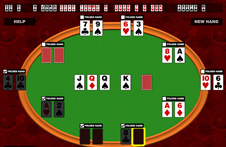How to read betting markets
Monitor betting lines closely; early adjustments signal where money is flowing. Pay attention to line movements before games start; a significant shift often indicates insider information or market sentiment changes. Knowledge about team injuries, weather conditions, or other factors can give insight into why odds adjust.
Avoid relying solely on popular teams or historical data. Instead, analyze key performance indicators such as player stats, matchups, and recent form. Employ metrics like expected goals in soccer or advanced analytics in basketball to get a clearer view of performance trends. This deeper analysis provides an edge over casual bettors.
Utilize multiple sportsbooks to compare odds. Even minor differences can lead to better potential payouts. Look for value bets–situations where the odds offered exceed the actual probability of the event occurring. Consistently placing value bets increases the likelihood of long-term profitability.
Engage with betting communities to gain diverse perspectives. Forums and social media can offer insights into what other bettors are observing and thinking. Sharing information and strategies enriches your understanding of the market.
Keep records of your bets to refine your strategies. Analyzing past performances reveals patterns and mistakes that can inform future decisions. Embrace a methodical approach, making adjustments as you learn more about betting psychology and market behaviors. This disciplined practice fosters smarter betting decisions and increased success.
How to Analyze Odds for Better Insight
Focus on converting odds into implied probabilities to gain clear insight into a betting market. To do this, use the formula: Implied Probability = 1 / Odds. This conversion reveals how likely an outcome is according to bookmakers.
Consider different types of odds formats: fractional, decimal, and moneyline. Each format communicates value differently, so familiarize yourself with all three to cross-verify your calculations.
- Fractional Odds: Typically used in the UK. For example, 5/1 means you win for every bet.
- Decimal Odds: Common in Europe and Canada. For instance, odds of 6.00 mean a total return of for every wagered.
- Moneyline Odds: Predominantly in the US. Positive odds (e.g., +500) indicate the profit on a bet, while negative odds (e.g., -200) show how much you need to bet to win .
Compare odds across multiple sportsbooks to identify discrepancies. A slight variation in odds can significantly impact your returns, so thorough comparison is key. Use tools or websites designed to aggregate odds for efficiency.
Analyze historical performance of teams or players involved in the betting context. Reviewing past match statistics, head-to-head records, and current form provides deeper insight into potential outcomes. Apply this data to adjust your expectations and probability assessments.
Consider external factors, such as weather or injuries, which can greatly influence the odds. Stay updated with the latest news, especially close to the event time, as changes can lead to shifts in market odds.
Utilize betting patterns and movements. Sharp bettors often cause shifts in odds due to their large wagers. Monitoring these changes helps assess where the smart money is betting and can lead to valuable insights.
Lastly, track your bets and outcomes. Maintain a detailed record of each wager, the odds, and the results. This practice allows you to identify patterns in your decision-making and refine your betting strategy over time.
Identifying Market Movements and Their Implications
Monitor the odds frequently. Sudden shifts indicate significant information changes affecting teams or players. If a team moves from +200 to +150, investigate why. Analyze news sources, social media, and expert opinions to uncover the reasons behind the change.
Pay attention to line movements, especially right before the event. Sharp movements often signal confidence from larger betting groups or insiders. If a large favorite’s odds shift drastically, it might suggest expected injuries or strategy changes that are not yet public knowledge.
Consider betting volume alongside the odds. High betting volume on one side might impact your decision. If the public leans heavily towards one team, but the line moves against that, odds makers might anticipate a different outcome, suggesting value in betting the opposite side.
Track historical data and trends relating to market movements. Specific teams or sports often demonstrate predictable patterns in their betting behavior. Anomalies can present profitable betting opportunities. If a historically strong team suddenly sees their odds drop due to a minor setback, it may be wise to capitalize.
Utilize betting exchanges for insights. Unlike traditional sportsbooks, exchanges reflect real-time market sentiment. Observe how prices fluctuate and identify sharp movements to gauge the market's confidence in specific outcomes.
Incorporate line shopping into your strategy. Compare odds at multiple sportsbooks to find the best prices. Slight variations can significantly affect your returns, especially if you spot a discrepancy amidst changing market sentiments.
Finally, maintain a disciplined approach. Verify data before acting on market movements. Reacting impulsively can lead to losses. Instead, weigh your options carefully and make decisions based on informed analysis.
Utilizing Statistical Models to Enhance Predictions
Incorporate regression analysis to identify relationships between variables impacting outcomes. For instance, in sports betting, factors like player statistics, weather conditions, and historical performance can provide insights into future results. Build a model that weighs these inputs based on their historical significance, improving the accuracy of predictions.
Bayesian methods offer another powerful tool. By updating probabilities as new information arises, these models adapt to changes in performance or unexpected events. This flexibility ensures that your betting decisions remain informed by the most current data available. Start by establishing a prior probability, then refine it as new match data comes in.
Consider employing machine learning algorithms. Techniques like random forests or neural networks can analyze vast datasets to uncover patterns that traditional models might miss. Training these models on past performance data enables them to predict future matches with increased precision. Use cross-validation to ensure that your models generalize well to unseen data.
Incorporate simulations to account for uncertainty in predictions. Monte Carlo simulations, for example, allow you to model potential outcomes based on the variability of inputs. Running thousands of simulations can help you assess the range of possible results, giving you a better understanding of risk versus reward.
Lastly, stay updated with the latest advancements in statistical techniques. The field continually evolves, introducing new methods that can enhance your predictive capabilities. Regularly review literature and case studies to discover innovative approaches that can be applied to your betting strategies.
The Role of Public Perception in Betting Lines
Adjust your betting strategy by factoring in public perception. Sportsbooks continuously adapt betting lines based on how the public views each team or player. Understanding these shifts can provide valuable insights.
Analyze how popular sentiment influences the odds, as public opinion can lead to line adjustments. For instance, if a star player garners significant media attention, sportsbooks may lower the odds for their team to attract more bets. Monitor news cycles and social media to gauge prevailing attitudes; this information can guide your betting choices.
Investigate discrepancies between public sentiment and your own analysis. When the public heavily favors one side, it can create value on the opposing side if your research suggests otherwise. For example, if a well-known team faces a lesser-known opponent, but statistics favor the underdog, consider placing a bet there.
Evaluate betting trends in conjunction with public perception. Keep an eye on where the money flows. A sudden influx of bets on one team can indicate strong public confidence. Use this data to anticipate potential line shifts and position your bets accordingly.
Be cautious of emotional betting influenced by the public. Many bettors are swayed by loyalty or recent performances, which can cloud their judgment. By relying on data and statistical analysis, you can make more informed decisions that stand apart from the crowd.
In summary, incorporating public perception into your betting strategy offers a competitive edge. Stay informed, analyze trends, and trust your research to navigate the betting markets effectively.
Strategies for Comparing Bookmakers' Offers
Regularly check multiple bookmakers for the same event. This allows you to spot discrepancies in odds, which can significantly impact your potential profit. Use odds comparison websites to simplify this process and see a side-by-side view of different bookmakers' offerings.
Look beyond just the odds. Analyze additional factors such as promotional offers, free bets, and bonus conditions. Some bookmakers might provide higher odds but have less favorable terms for their bonuses. Always read the fine print to avoid surprises when cashing out your winnings.
Consider the reputation and reliability of each bookmaker. Information from customer reviews can provide insights into the user experience, payment speed, and quality of customer service. Focus on platforms with established credibility and positive feedback to ensure a safe betting environment.
Monitor the fluctuation of odds leading up to the event. Understanding how and why odds move can offer clues about public sentiment and market trends. This knowledge helps in making informed decisions well before placing your bet.
Leverage betting exchanges where you can bet against other users rather than traditional sportsbooks. Often, the odds are more favorable due to reduced overhead costs. This model can enhance your potential returns when compared to standard bookmakers.
Lastly, track your bets across different bookmakers. Maintain a detailed record of your betting activity, noting which sites yield the best results based on the types of bets you place. This ongoing analysis helps refine your strategy and direct your focus toward the most profitable bookmakers for your needs.
Assessing Risk Management Techniques in Betting
Implement a bankroll management strategy. Set aside a specific amount for betting and divide it into units. A common approach is to bet no more than 1-2% of your total bankroll on a single bet. This method minimizes the risk of significant losses.
Utilize betting exchanges for more control over your bets. These platforms allow you to back and lay bets, providing flexibility and a chance to hedge your position against losses. This technique enhances your overall risk management.
Incorporate statistical analysis into your decision-making. Analyze historical data and trends related to the events you want to bet on. Understanding patterns helps in assessing the likelihood of outcomes, which directly impacts risk assessment.
Consider diversifying your bets. Instead of focusing on a single market or event, explore different sports or types of wagers. Diversification can help spread risk and reduce the potential impact of unfavorable outcomes.
Keep emotions in check. Develop a disciplined approach and stick to your strategy, regardless of wins or losses. Emotional betting can lead to poor decision-making and increased risk.
Set clear limits for losses and gains. Determine in advance when to walk away, whether after achieving a specific profit or hitting a loss threshold. This practice prevents chasing losses and keeps your betting strategy aligned with your goals.
Lastly, continuously review and adjust your strategies. Analyze your results regularly to identify what works and what doesn't. Adapting to your experiences enhances your risk management and prepares you for future bets.






